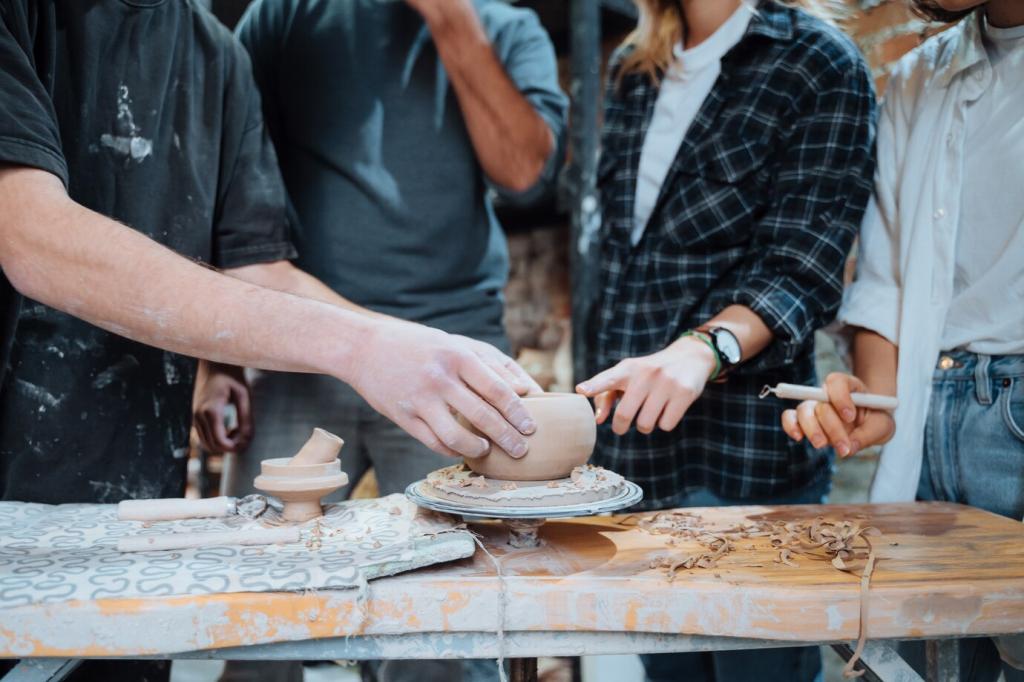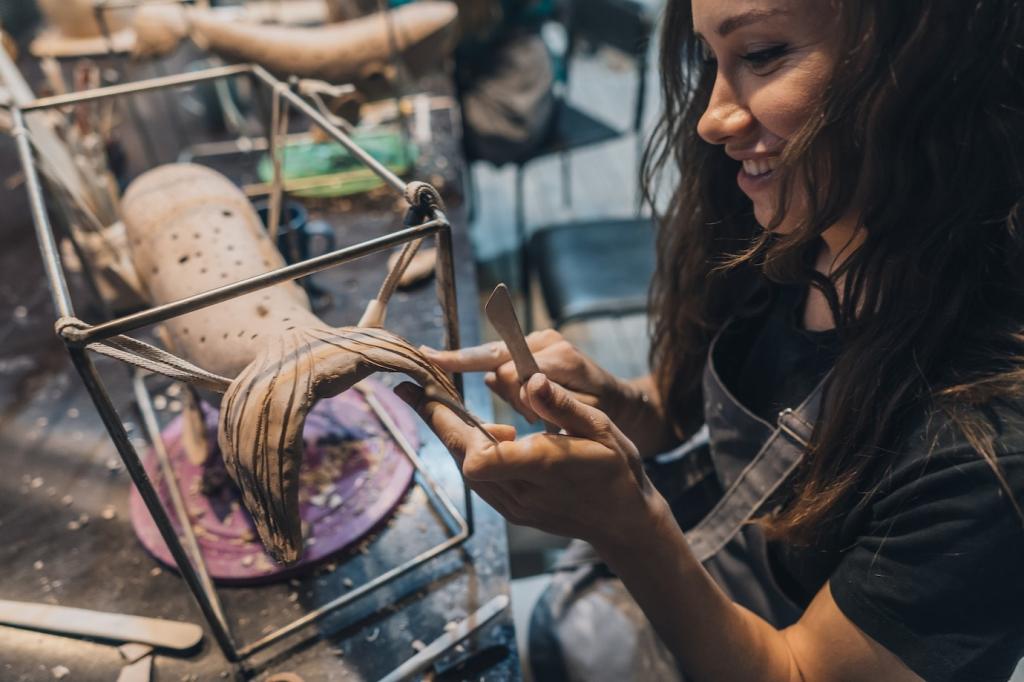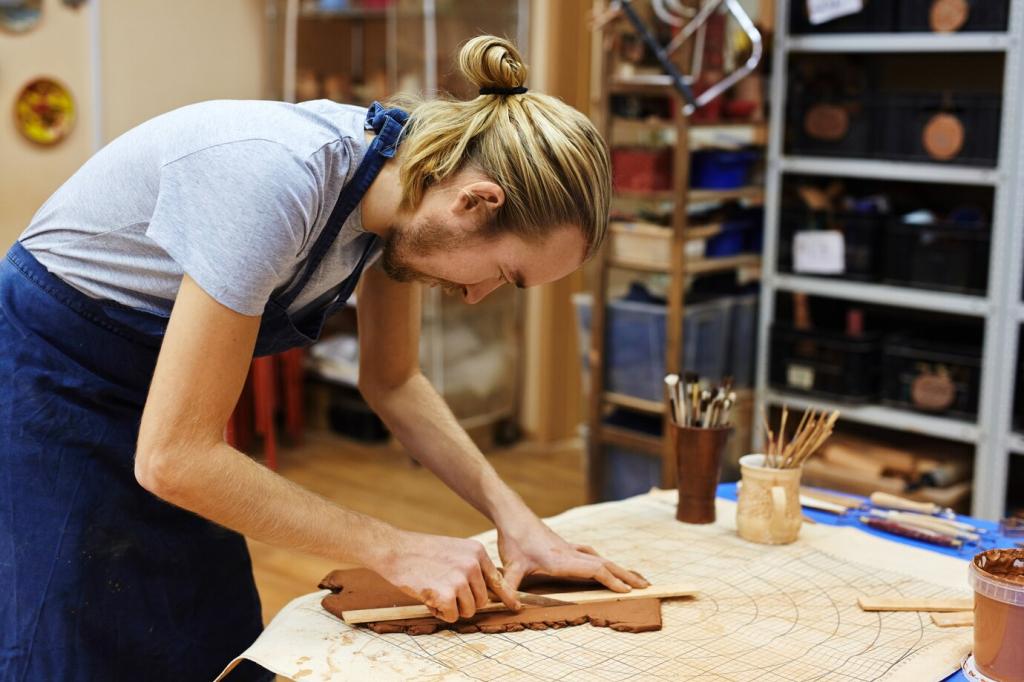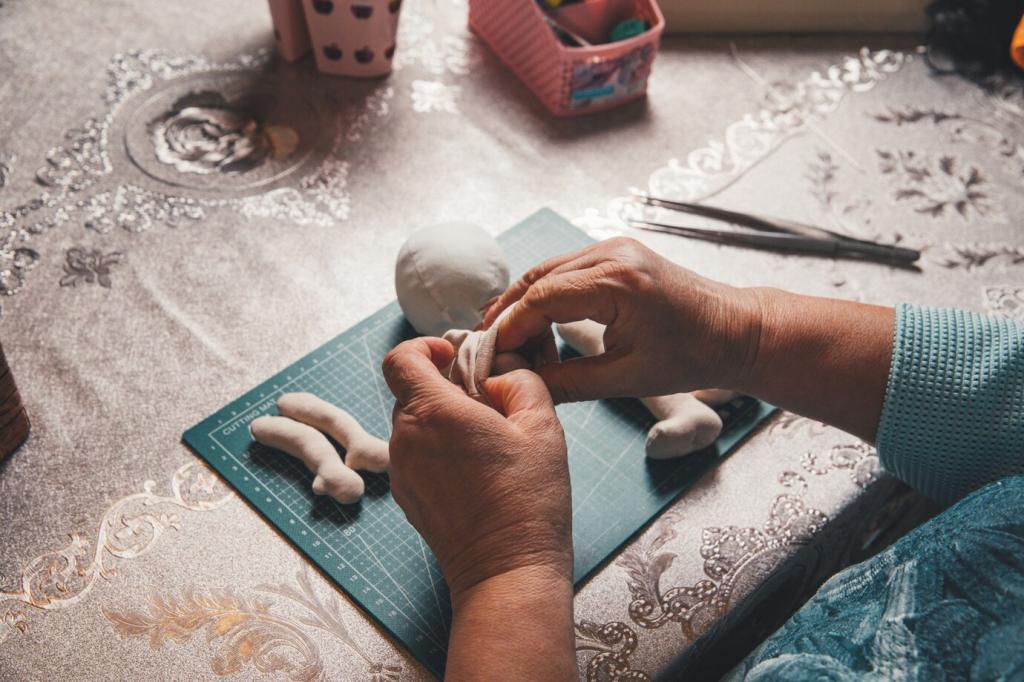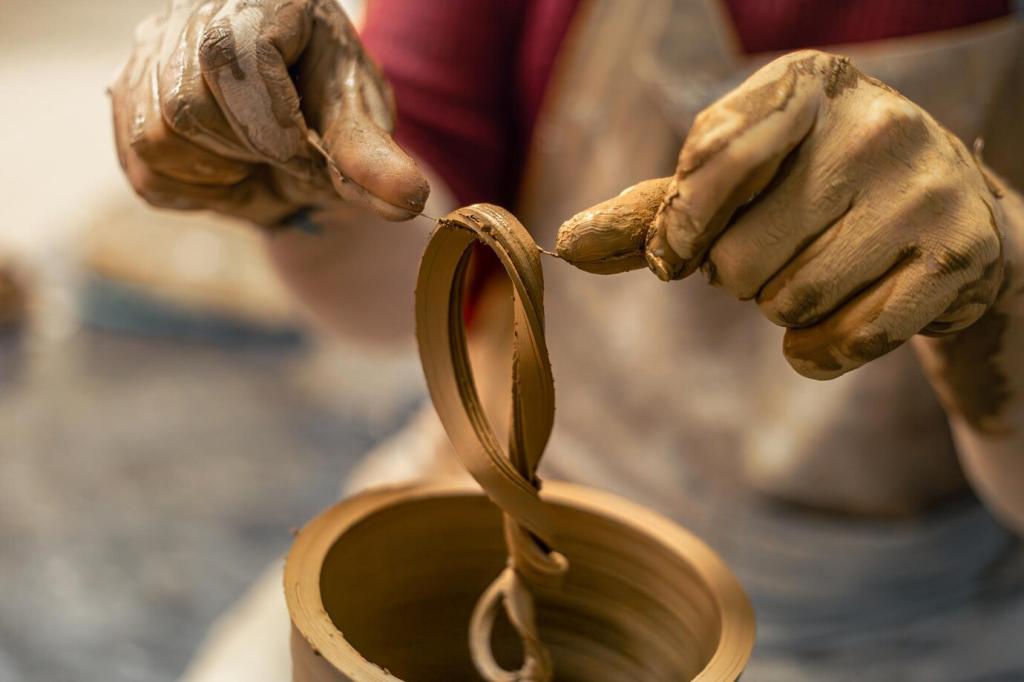Movement, Moisture, and Grain
Wood swells more tangentially than radially; quarter-sawn boards move less across width. Seal all sides evenly, allow gaps, and orient grain thoughtfully to prevent cupping, splitting, and joint stress as humidity swings.
Movement, Moisture, and Grain
Floating panels, slotted screw holes, and breadboard ends respect movement while showcasing grain. Avoid gluing long-grain to end-grain joints for strength; use tenons, dominos, or dowels where fiber direction supports lasting connections gracefully.


